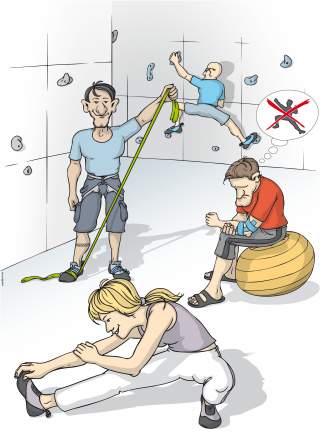1. Start with setting up your team
Clarify the weight difference between partners and take the appropriate measures
Consider belaying skills and climber’s condition
Agree on rules of communication
Check climbing equipment
2. Run a partner check before every climb
Reciprocal checks with eyes and hands:
Tie-in knot and tie-in point
Belay carabiner
Belay device - lock-off test
Harness and harness buckles
End of rope tied for a backup
3. Only use familiar safety equipment
Semi-automatics offer additional safety
Brake hand principle: one hand always holds the brake rope
Make sure your brake hand is in the correct positioning
Carabiner, rope and belay device all match
4. Pay full attention when securing
No slack rope
Choose the correct location near the wall
Watch your partner
Belay glasses improve focus
5. Leave enough room for falls
Leave ample room to avoid collisions
Keep your distance to the climber‘s fall line on the ground
Leave enough room for other climbers on the same wall
Take potential pendulum falls into account
6. Clip into all quick draws correctly
Look for a stable body posi-tion for clipping
Avoid any falls while clipping
risk of falling to the ground!
Make sure the rope runs cor-rectly through
the carabiner -Do not move behind the rope
7. Climb top rope at existing anchor points only
Do not top rope on single carabiners
Clip into all quick draws when top roping in routes in severe overhangs
Make sure the rope is inserted correctly into the belay device
8. Be careful when lowering
Lower your partner slowly and smoothly
Make sure there is room to touch down
Never thread two ropes through one anchor point
Communicate when climber is at the anchor point
9. Warm up before the start
Gradually increase the intensity
Cool down at the end of the climb
Give injuries time to heal
10. Be aware of your responsibilities
Be self-critical and open to feedback
Bring up any errors, both yours and other people‘s
Keep up to date with the latest developments in belaying and safety issues
Show consideration for others
Dateien
| Name | Größe |
|---|---|
| 1911-CAA-DAV-Kletterplakate_eng-A3_RZ_32340.pdf | 2.88 MB |
